One of the beautiful things about snorkeling is how easy it is to get started. Unlike scuba diving, you don’t need a scuba certification, nor do you need much gear. Just a mask and snorkel and you’re ready to roll. Now you might be wondering: what about snorkel fins? Do you need fins to snorkel?
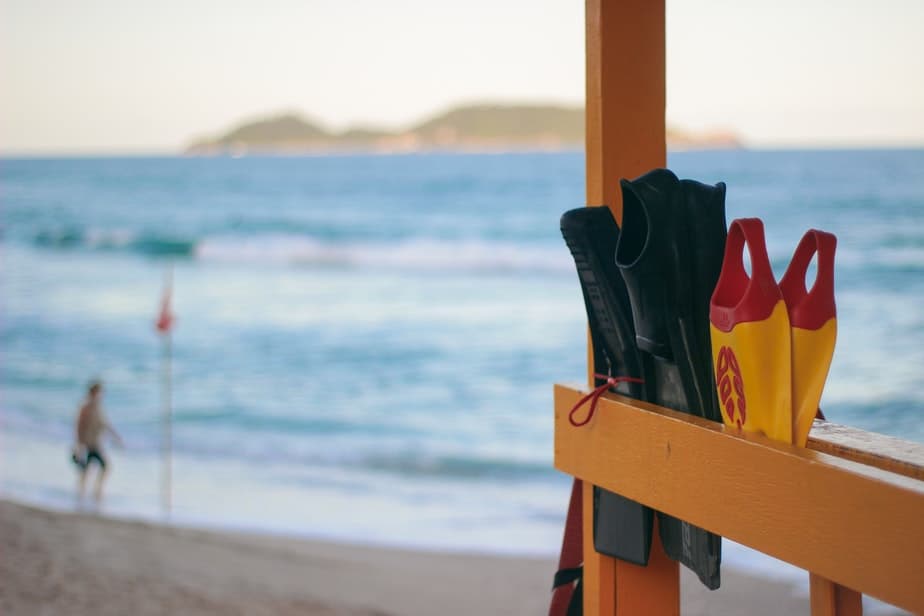
You do not need flippers to snorkel. Snorkel fins are beneficial but ultimately not a requirement. They can help you conserve energy, swim faster, and protect your feet, among other benefits. That said, the core of the snorkeling experience is breathing through a snorkel and observing the underwater sights through the dive mask, which do not require snorkel fins.
In this article, we will make the case for why you should seriously consider snorkeling with snorkel fins even though they are not strictly necessary, because they can improve the experience drastically.
Benefits of Snorkel Fins and Why You Should Wear Them
Safety
Safety is paramount when it comes to any water activity, and snorkeling is no exception. Fins are an essential safety tool because they significantly boost your propulsion in the water. This increased speed allows you to quickly navigate away from potential dangers such as strong currents, approaching boats, or aggressive marine life.
In unforeseen situations, like when you might need to swiftly return to shore or your boat due to changes in weather conditions or any unexpected disturbances, having fins can be a lifesaver. Think of them as your underwater accelerator, providing that necessary thrust when you need it most.
Energy Conservation
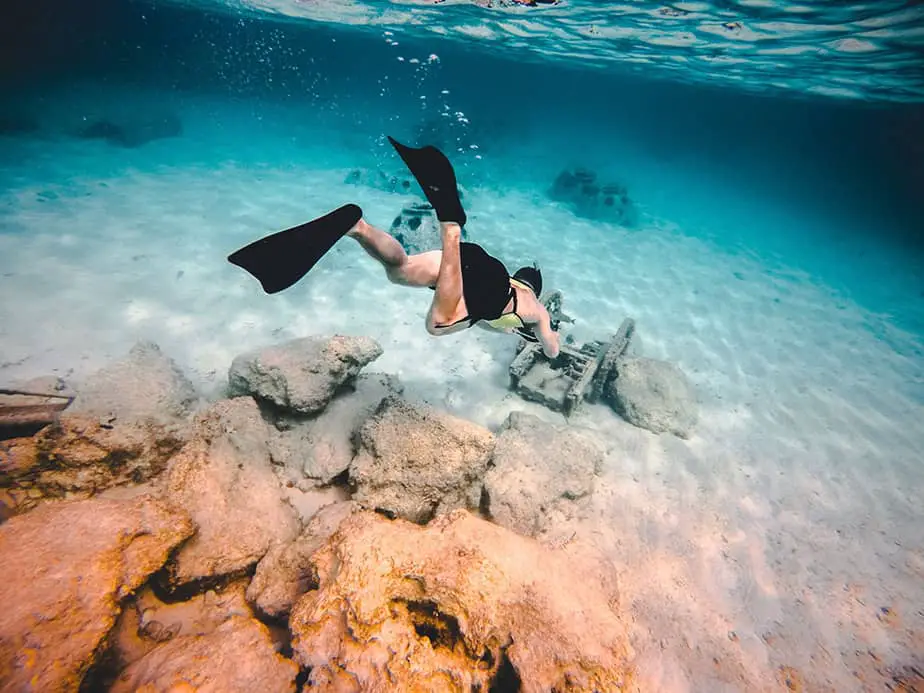
The beauty of the ocean can be mesmerizing, but without the right gear, exploring it can be exhausting. Fins are designed to optimize the power of every kick, allowing you to move through the water using much less energy than you would with just your bare feet.
The wide surface area of fins acts as an extension of your feet, amplifying the push against the water with every stroke. This not only conserves energy but also reduces muscle fatigue.
With fins, you can enjoy longer snorkeling sessions and have more stamina to explore wider areas without getting tired quickly.
Maneuverability
The underwater world is full of wonders, but it’s also filled with obstacles like corals, rocks, and other structures. Maneuverability is crucial when navigating these environments. Fins significantly enhance your ability to change directions, make tight turns, and control your movements.
With the extra thrust and control they provide, you can easily weave around coral reefs, dodge potential hazards, and get closer to intriguing marine life without disturbing their natural habitats. Essentially, wearing fins is like upgrading from walking to gracefully dancing underwater.
Depth Control
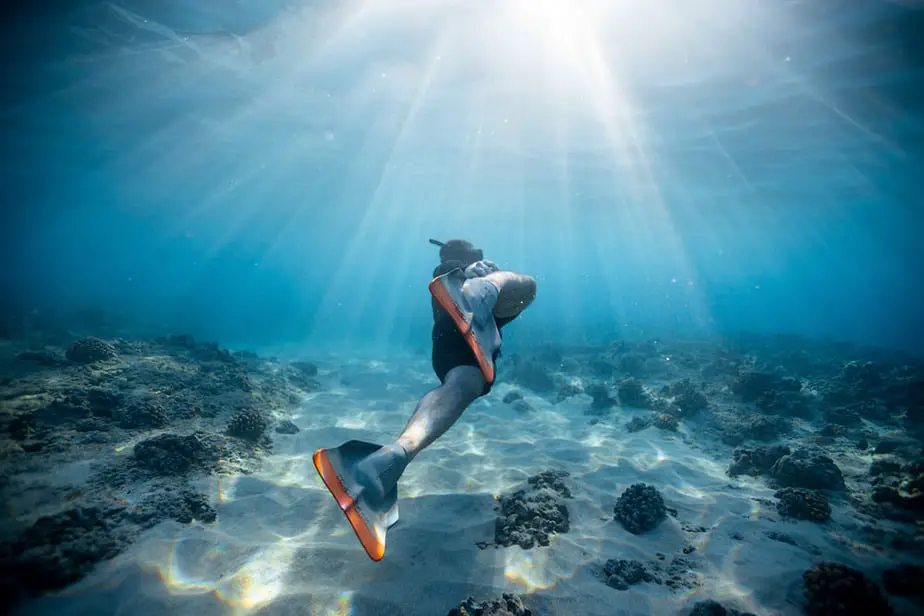
When snorkeling, it’s not just about moving horizontally – sometimes, you might want to dive a little deeper to inspect something intriguing or float closer to the surface for a break.
Fins give you better control over your depth. The resistance they provide against the water can be harnessed using specific leg movements. By adjusting the angle and intensity of your kicks, you can effortlessly ascend, descend, or hover at a particular depth.
This level of depth control is not only valuable for exploration but also for ensuring you don’t unintentionally come into contact with delicate or potentially dangerous marine life below.
Reduced Surface Splashing
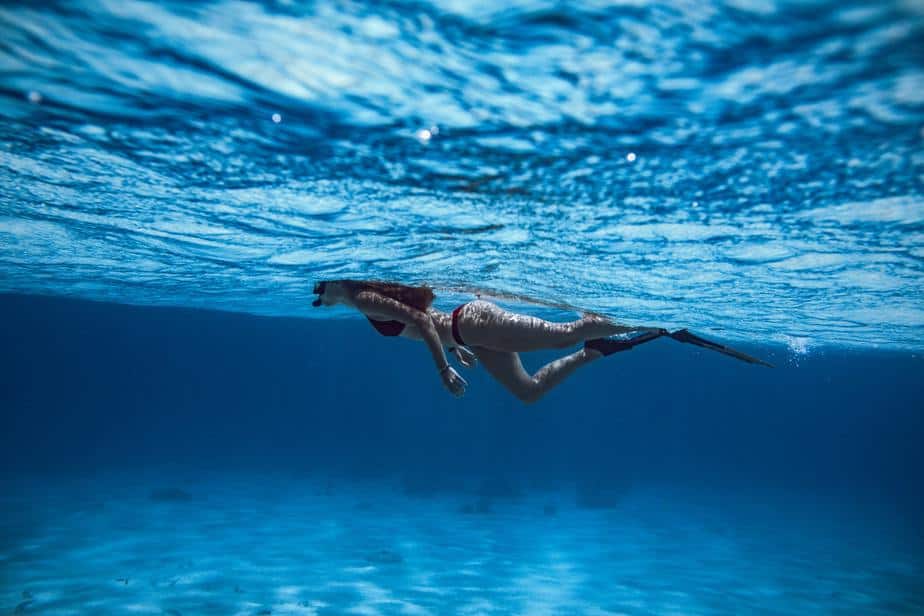
Imagine trying to gaze into a serene underwater world while creating a series of splashes and ripples with your feet. Not ideal, right? Without fins, the feet tend to move more chaotically, often causing splashing at the water’s surface. This disturbance can make it harder for you to see clearly underwater due to the ripples.
Moreover, excessive surface splashing can also startle marine life, making them less likely to come close. Fins streamline your leg movements, reducing unnecessary surface disturbances and allowing for a clearer, more peaceful view of the aquatic wonders below.
Foot Protection
While the underwater environment is breathtakingly beautiful, it can also be full of hazards. Sharp corals, stinging marine creatures, and rugged underwater terrains can pose threats to bare feet.
Fins act as a protective layer, shielding your feet from potential injuries. They prevent cuts, scrapes, or stings that could put a damper on your snorkeling adventure.
This protection is especially valuable in unfamiliar waters where unexpected hazards might lurk beneath. With fins on, you can explore with greater confidence, knowing your feet are shielded from most underwater dangers.
Consistent Speed
The marine world is dynamic, with creatures on the move and currents that shift. To truly enjoy snorkeling, it’s beneficial to maintain a consistent speed, allowing you to swim alongside schools of fish or follow a playful sea turtle on its journey.
Fins provide the means to achieve this consistent speed. Their design maximizes propulsion, ensuring that each kick translates to steady forward motion. By maintaining this rhythm, you can synchronize your movements with the marine environment, leading to more enriching interactions and observations.
Economical Breathing
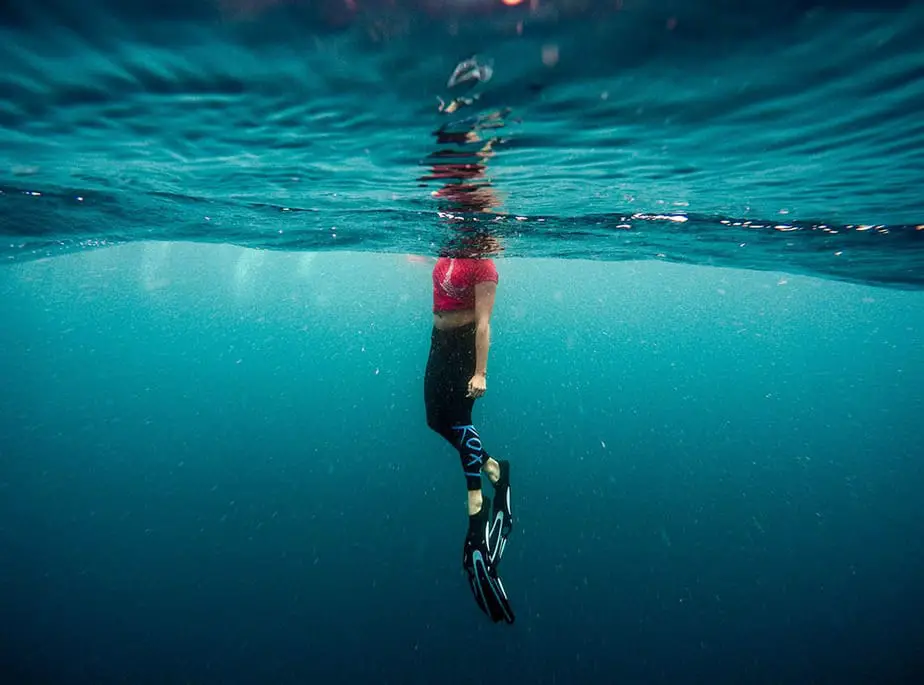
The physical act of swimming, especially without the aid of fins, can be taxing on the body, leading to more frequent and deeper breaths. This rapid breathing can be less than ideal, especially when trying to maintain a relaxed state while observing marine life.
Fins, with their enhanced propulsion, allow snorkelers to travel longer distances with fewer strokes. This efficiency translates to more relaxed, shallow breathing.
The result? A more tranquil snorkeling experience where you can focus on the beauty around you rather than catching your breath.
Improved Technique
Just like any other sport or activity, technique matters in snorkeling. Proper leg movement and body positioning can make a significant difference in your underwater exploration.
Fins can be excellent teachers in this regard. They introduce snorkelers to the nuances of effective finning techniques, promoting smooth, fluid motions. Over time, this can lead to improved overall swimming technique, even without the fins.
By refining these movements, snorkelers can optimize their underwater adventures, ensuring they’re moving efficiently and making the most of their time amidst the ocean’s wonders. Also, perhaps this can be a great stepping stone to getting started with scuba diving.
Overall Enhanced Experience
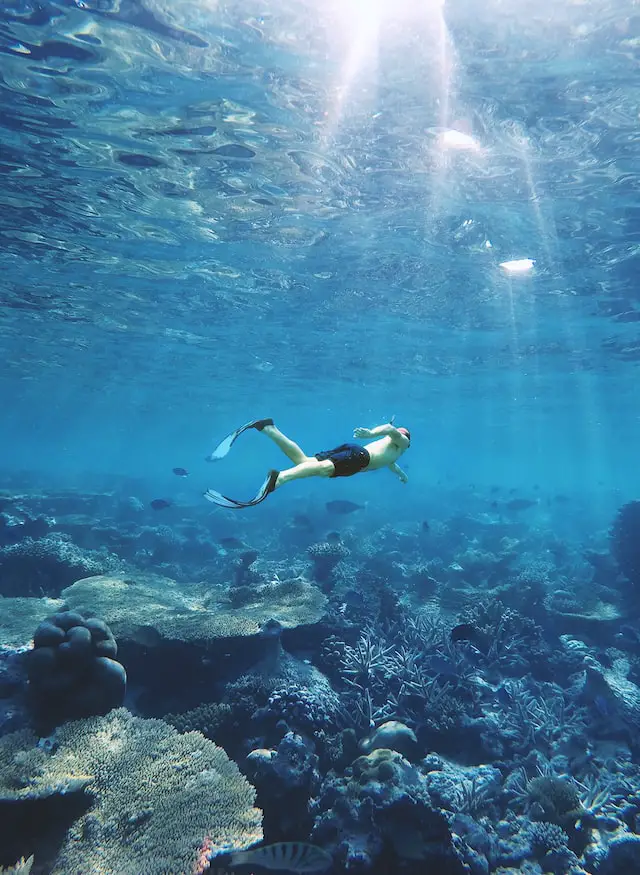
The ocean is vast, and there’s a lot to see. With the added speed and agility provided by fins, snorkelers can explore larger areas in a shorter amount of time. This means encountering a wider variety of marine life, from colorful schools of fish to magnificent coral formations.
The sensation of gliding seamlessly through the water also amplifies the overall snorkeling experience, making it feel more adventurous and immersive. Instead of being limited to a small area near the shore or boat, fins allow you to venture further, diving into hidden pockets of the underwater world that many might miss.
Frequently Asked Questions
What types of flippers are best for snorkeling?
When it comes to snorkeling, these are the main types of fins to consider:
- Full Foot Fins: These fins fit like a shoe and cover the entire foot. They are lightweight, making them suitable for snorkeling in warm water. Full foot fins are generally more comfortable as there’s no strap rubbing against the back of your ankle.
- Open Heel Fins: These have an adjustable strap around the heel, allowing for a range of foot sizes. They are usually worn with booties, which can be beneficial if entering the water from rocky or rough terrains. They might be a bit heavier than full foot fins.
- Short Fins: These are compact and offer less resistance in water. They are easier to pack, making them popular among travelers. However, they might not give as much propulsion as longer fins.
- Split Fins: These have a split in the middle, which reduces the effort needed for each kick and minimizes fatigue. They can be particularly helpful for snorkelers with joint issues.
For most casual snorkelers, full foot or short fins are often preferred due to their lightweight and user-friendly nature.
Are there any drawbacks to using fins while snorkeling?
Yes, there are a few drawbacks to consider:
- Mobility on Land: Fins can be cumbersome when you’re out of the water. Walking or climbing over rocks can be challenging.
- Extra Luggage: If you’re traveling, fins can take up space in your suitcase or backpack. However, short fins are designed to minimize this issue.
- Potential for Cramps: Especially for beginners, using fins can sometimes lead to cramps in the calves or feet. This is often due to incorrect technique or fins that don’t fit well.
- Environmental Concern: In some areas, especially those with delicate coral reefs, fins can inadvertently cause damage if snorkelers are not careful.
Is there a difference between snorkeling fins and diving fins?
Yes, there are distinct differences between the two:
- Length: Diving fins are typically longer to provide more propulsion, which is needed when divers are carrying heavy equipment. Snorkeling fins are shorter and lighter, designed for surface swimming.
- Stiffness: Diving fins tend to be stiffer. This stiffness helps divers move more efficiently underwater with the heavy gear. Snorkeling fins are more flexible, offering a more relaxed swimming experience.
- Design: Open heel fins are more common in diving because divers often wear booties for protection against cold and rough terrains. Snorkelers might prefer full foot fins, especially in warmer waters.
How do I choose the right size of fins for my feet?
Choosing the right size is crucial for comfort and functionality. Here’s a guide to help:
- Check Manufacturer’s Size Chart: Every brand can have slight variations in sizing. Always refer to the specific brand’s size chart.
- Consider Footwear: If you’re getting open heel fins and plan to wear booties, ensure you size your fins with the booties on.
- Fit: Your fins should feel snug but not tight. There shouldn’t be any large gaps, but your feet also shouldn’t feel constricted. If your toes are cramped or the fin cuts into your ankle, they’re too small. If your foot moves around inside, they’re too large.
- Try Before You Buy: If possible, try on multiple sizes and styles before purchasing, especially if you’re buying from a physical store. It helps you get a feel for what’s comfortable and what provides the best performance.
- Consider Adjustable Straps: If you’re unsure about sizing, or if multiple people might use the fins, consider fins with adjustable heel straps.
Remember, comfort is paramount. Even the best fins won’t serve you well if they don’t fit properly.
Are there specific techniques for using fins effectively?
Yes, to use fins effectively, you should keep a few techniques in mind:
- Flutter Kick: This is the most common kick, where you move your legs in an up-and-down motion. The movement should originate from your hips and not your knees. Keep your legs relatively straight, with only a slight bend in the knees.
- Bend Slightly at the Knees: While you don’t want to kick from the knees, a small bend can help make your movement more fluid.
- Keep Fin Tips Below the Surface: To maximize propulsion, your fins should remain submerged. Kicking at the water’s surface can waste energy and cause splashing.
- Stay Relaxed: Tense muscles tire quickly. Keep your movements smooth and relaxed to conserve energy and reduce the risk of cramps.
- Use Your Whole Leg: Relying solely on your calves can lead to quick fatigue. Use your thighs and hips to generate most of the motion.
- Practice: Like any skill, efficient finning takes practice. Spend time in calm waters to get used to the sensation and to hone your technique.
Can children use fins while snorkeling, or are there child-specific fins?
Yes, children can use fins while snorkeling, and there are fins specifically designed for them:
- Child-Specific Fins: These fins are smaller and often more flexible than adult fins, making them suitable for a child’s strength and stamina.
- Adjustable Heel Straps: For growing children, fins with adjustable heel straps can be a good investment as they can accommodate a child’s growing feet.
- Safety First: Make sure children are always supervised when using fins. They should be comfortable in the water and know basic swimming techniques.
- Training: Before letting children snorkel in open water, it might be beneficial to let them practice in a pool to get accustomed to the fins.
Is it better to rent or buy fins if I’m just starting out with snorkeling?
Whether to rent or buy largely depends on your situation:
Renting:
- Pros: It’s less of an upfront investment, ideal for those trying snorkeling for the first time. You also don’t have to worry about transporting them if traveling.
- Cons: Over time, repeated rentals can be more expensive than purchasing. You might not get a perfect fit, and there’s a potential hygiene concern with used equipment.
Buying:
- Pros: You get fins that fit you perfectly and can ensure they’re maintained well. Over time, it’s more cost-effective if you snorkel regularly.
- Cons: Requires an initial investment and you need to transport them when traveling.
For beginners, if you’re unsure whether you’ll be snorkeling frequently, it might be wise to rent first. If you find yourself enjoying the activity and plan to do it regularly, investing in your own pair can be a good decision.
How do I care for and maintain my snorkeling fins?
Proper care and maintenance can extend the lifespan of your fins:
- Rinse After Use: Always rinse your fins with fresh water after every use to remove salt, chlorine, and other contaminants.
- Dry Properly: Dry your fins in a shaded area. Direct sunlight can degrade the materials over time.
- Avoid Sharp Objects: Be cautious when storing or transporting your fins. Sharp objects can cause cuts or nicks.
- Store Flat or Hanging: To maintain their shape, store fins flat or hang them by the heel strap. Avoid placing heavy objects on top of them.
- Check for Damage: Before and after every use, inspect your fins for signs of wear or damage.
- Avoid Chemicals: Don’t use harsh chemicals or solvents on your fins. If you need to clean them, a mild detergent and water should suffice.
- Temperature: Store your fins in a cool, dry place. Extreme temperatures, especially heat, can affect their shape and flexibility.
Regular maintenance not only ensures your fins last longer but also that they perform optimally every time you use them.
Sources:
- https://www.cheapsurfgear.com/blogs/surf-news/do-you-need-finsto-snorkel
- https://www.scubadoctor.com.au/snorkelling-fins-buying-guide.htm
- https://www.snorkel-mart.com/reasons-fins-are-necessary-when-snorkeling
- https://www.keywestsnorkelingtours.com/the-purpose-of–fins-for-snorkeling/
- https://www.scuba.com/blog/scuba-snorkeling-fins-guide/

